
It was a war of greed. An already rich and powerful nation wanted more and was willing to sacrifice anything to get it.
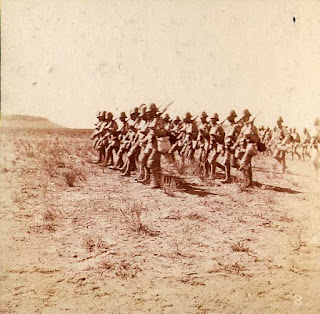
The Second Boer War (Dutch: Tweede Boerenoorlog, Afrikaans: Tweede Vryheidsoorlog or Tweede Boereoorlog) was fought from 11 October 1899 until 31 May 1902 between the British Empire and the Afrikaans-speaking Dutch settlers of two independent Boer republics, the South African Republic (Transvaal Republic) and the Orange Free State. It ended with a British victory and the annexation of both republics by the British Empire; both would eventually be incorporated into the Union of South Africa, a dominion of the British Empire, in 1910.

The conflict is commonly referred to as The Boer War but is also known as the South African War outside South Africa, the Anglo-Boer War among most South Africans, and in Afrikaans as the Anglo-Boereoorlog or Tweede Vryheidsoorlog ("Second War of Liberation" or lit. "Second Freedom War") or the Engelse oorlog (English War).[7]
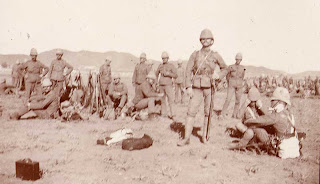
The Second Boer War and the earlier, much less well known, First Boer War (December 1880 to March 1881) are collectively known as the Boer Wars.
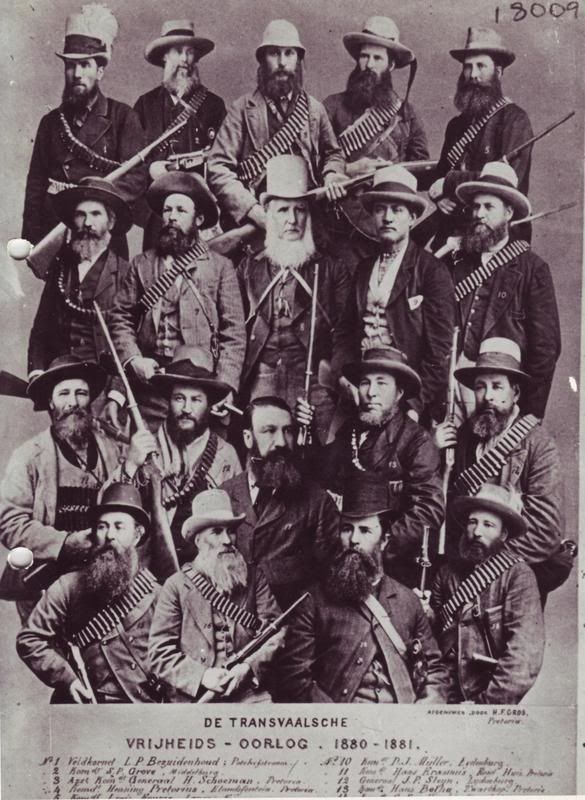
Origins

The complex origins of the war resulted from more than a century of conflict between the Boers and the British Empire, but particular immediate importance attached to the question as to which white nation would control and benefit most from the very lucrative Witwatersrand gold mines.[8] During the Napoleonic Wars, a British military expedition landed in the Cape Colony and defeated the defending Dutch forces at the Battle of Blaauwberg (1806).[9] After the war, the British formally acquired the colony (1814), and encouraged immigration by British settlers who were largely at odds with the Dutch settlers. Many Boers who were dissatisfied with aspects of the British administration, in particular with Britain's abolition of slavery on 1 December 1834, elected to migrate away from British rule in what became known as the Great Trek.[9]

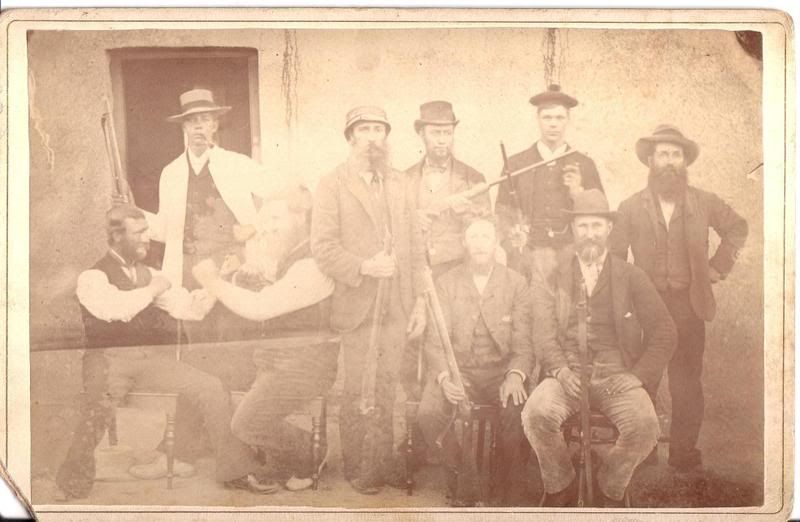
The Trekkers initially followed the eastern coast towards Natal and then, after Britain annexed Natal in 1843, journeyed northwards towards the interior. There they established two independent Boer republics: the South African Republic (1852; also known as the Transvaal Republic) and the Orange Free State (1854). The British recognised the two Boer republics in 1852 and 1854, but British annexation of the Transvaal in 1877 led to the First Boer War in 1880–81. After the British suffered defeats, particularly at the Battle of Majuba Hill (1881), the independence of the two republics was restored subject to certain conditions, however, relations remained uneasy.

In 1866 Erasmus Jacobs discovered diamonds at Kimberley, prompting a diamond rush and a massive influx of foreigners to the borders of the Orange Free State. Then in 1886, an Australian discovered gold in the Witwatersrand area of the South African Republic. Gold made the Transvaal the richest and potentially the most powerful nation in southern Africa; however, the country had neither the manpower nor the industrial base to develop the resource on its own. As a result, the Transvaal reluctantly acquiesced to the immigration of uitlanders (foreigners), mainly from Britain, who came to the Boer region in search of fortune and employment. This resulted in the number of uitlanders in the Transvaal potentially exceeding the number of Boers, and precipitated confrontations between the earlier-arrived Boer settlers and the newer, non-Boer arrivals.


British expansionist ideas (notably propagated by Cecil Rhodes) as well as disputes over uitlander political and economic rights resulted in the failed Jameson Raid of 1895. Dr. Leander Starr Jameson, who led the raid, intended to encourage an uprising of the uitlanders in Johannesburg. However, the uitlanders did not take up arms in support, and Transvaal government forces surrounded the column and captured Jameson's men before they could reach Johannesburg.[10]


As tensions escalated, political manoeuvrings and negotiations attempted to reach compromise on the issues of the rights of the uitlanders within the South African Republic, control of the gold mining industry, and the British desire to incorporate the Transvaal and the Orange Free State into a federation under British control. Given the British origins of the majority of uitlanders and the ongoing influx of new uitlanders into Johannesburg, the Boers recognised that granting full voting rights to the uitlanders would eventually result in the loss of ethnic Boer control in the South African Republic.
To Lord Milner's satisfaction, the June 1899 negotiations in Bloemfontein failed, and in September 1899 British Colonial Secretary Joseph Chamberlain demanded full voting-rights and representation for the uitlanders residing in the Transvaal. Paul Kruger, the President of the South African Republic, issued an ultimatum on 9 October 1899, giving the British government 48 hours to withdraw all their troops from the borders of both the Transvaal and the Orange Free State, failing which the Transvaal, allied to the Orange Free State, would declare war on the British government. The British government rejected the South African Republic's ultimatum, resulting in the South African Republic and Orange Free State declaring war on Britain.

Phases

The war had three distinct phases. In the first phase, the Boers mounted pre-emptive strikes into British-held territory in Natal and the Cape Colony, besieging the British garrisons of Ladysmith, Mafeking and Kimberley. The Boers then won a series of tactical victories at Colenso, Magersfontein and Spionkop against a failed British counteroffensive to relieve the sieges.

In the second phase, after the introduction of greatly increased British troop numbers under the command of Lord Roberts, the British launched another offensive in 1900 to relieve the sieges, this time achieving success. After Natal and the Cape Colony were secure, the British were able to invade the Transvaal, and the republic's capital, Pretoria, was ultimately captured in June 1900.

In the third and final phase, beginning in March 1900, the Boers launched a protracted hard-fought guerrilla war against the British forces, lasting a further two years, during which the Boers raided targets such as British troop columns, telegraph sites, railways and storage depots. In an effort to cut off supplies to the raiders, the British, now under the leadership of Lord Kitchener, responded with a scorched earth policy of destroying Boer farms and moving civilians into concentration camps.[11]

Some parts of the British press and British government expected the campaign to be over within months, and the protracted war gradually became less popular, especially after revelations about the conditions in the concentration camps (where 26 thousand women and children died of disease and malnutrition). The Boer forces finally surrendered on Saturday, 31 May 1902, with 54 of the 60 delegates from the Transvaal and Orange Free State voting to accept the terms of the peace treaty.[12] This was known as the Treaty of Vereeniging, and under its provisions, the two republics were absorbed into the British Empire, with the promise of self-government in the future. This promise was fulfilled with the creation of the Union of South Africa in 1910.

The war had a lasting effect on the region and on British domestic politics. For Britain, the Second Boer War was the longest, the most expensive (£200 million), and the bloodiest conflict between 1815 and 1914,[13] lasting three months longer and resulting in higher British casualties than the Crimean War (1853–56).

Background
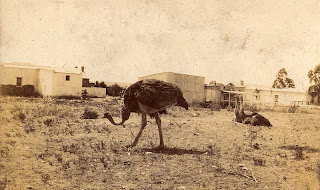
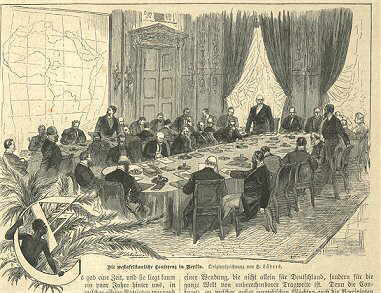
The southern part of the African continent was dominated in the 19th century by a set of struggles to create within it a single unified state. While the Berlin Conference of 1884–5 sought to draw boundaries between the European powers' African possessions, it also set the stage for further scrambles. The British attempted to annexe first the South African Republic in 1880, and then, in 1899, both the South African Republic and the Orange Free State. In 1868, the British annexed Basutoland in the Drakensberg Mountains following an appeal from Moshesh, the leader of a mixed group of African refugees from the Zulu wars, who sought British protection against the Boers.

In the 1880s, Bechuanaland (modern Botswana, located north of the Orange River) became the object of a dispute between the Germans to the west, the Boers to the east, and the British Cape Colony to the south. Although Bechuanaland had no economic value, the "Missionaries Road" passed through it towards territory farther north. After the Germans annexed Damaraland and Namaqualand (modern Namibia) in 1884, the British annexed Bechuanaland in 1885.
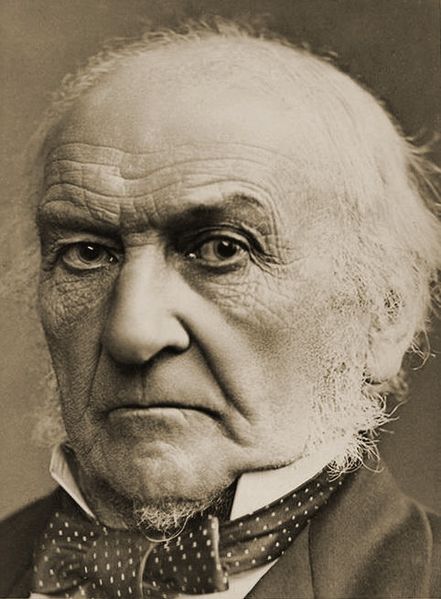
In the First Boer War of 1880–81 the Boers of the Transvaal Republic had proved skilful fighters in resisting the British attempt at annexation, in causing in a series of British defeats. The British government of William Ewart Gladstone had been unwilling to become bemired in a distant war, which required substantial troop reinforcement and expense, for what was at the time perceived to be a minimal return. An armistice followed, ending the war, and subsequently a peace treaty was signed with the Transvaal President Paul Kruger.

However, when, in 1886, a major gold field was discovered at an outcrop on a large ridge some sixty kilometres south of the Boer capital at Pretoria, it reignited British imperial interests. The ridge, known locally as the "Witwatersrand" (literally "white water ridge"–a watershed) contained the world's largest deposit of gold-bearing ore. Although it was not as rich as gold finds in Canada and Australia, its consistency made it especially well-suited to industrial mining methods. With the 1886 discovery of gold in the Transvaal, the resulting gold rush brought thousands of British and other prospectors and settlers from across the globe and over the border from the Cape Colony (under British control since 1806).
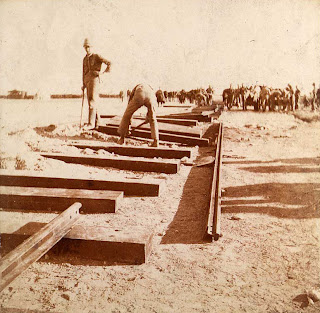
The city of Johannesburg sprang up as a shanty town nearly overnight as the uitlanders ("foreigners," meaning non-Boer whites) poured in and settled around the mines. The influx was such that the uitlanders quickly outnumbered the Boers in Johannesburg and along the Rand, although they remained a minority in the Transvaal as a whole. The Boers, nervous and resentful of the uitlanders' growing presence, sought to contain their influence through requiring lengthy residential qualifying periods before voting rights could be obtained, by imposing taxes on the gold industry, and by introducing controls through licensing, tariffs and administrative requirements. Among the issues giving rise to tension between the Transvaal government on the one hand, and the Uitlanders and British interests on the other, were

(a) Established uitlanders, including the mining magnates, wanted political, social, and economic control over their lives. These rights included a stable constitution, a fair franchise law, an independent judiciary, and a better educational system. The Boers, for their part, recognised that the more concessions they made to the uitlanders the greater the likelihood–with approximately 30,000 white male Boer voters and potentially 60,000 white male uitlanders–that their independent control of the Transvaal would be lost and the territory absorbed into the British Empire.

(b) The uitlanders resented the taxes levied by the Transvaal government, particularly when this money was not spent on Johannesburg or uitlander interests, but diverted to projects elsewhere in the Transvaal. For example, as the gold-bearing ore sloped away from the outcrop underground to the south, more and more blasting was necessary for extraction, and mines consumed vast quantities of explosives. A box of dynamite costing five pounds included five shillings tax. Not only was this tax perceived as exorbitant, but British interests were offended when President Paul Kruger gave monopoly rights for the manufacture of the explosive to a non-British branch of the Nobel company, which infuriated the British.[14] The so-called "dynamite monopoly" became a major pretext for war.
(c) British imperial interests were alarmed when in 1894–95 Kruger proposed building a railway through Portuguese East Africa to Delagoa Bay, bypassing British controlled ports in Natal and Cape Town and avoiding British tariffs.[15] At the time the Prime Minister of the Cape Colony was Cecil Rhodes, a man driven by a vision of a British controlled Africa extending from Cape to Cairo.
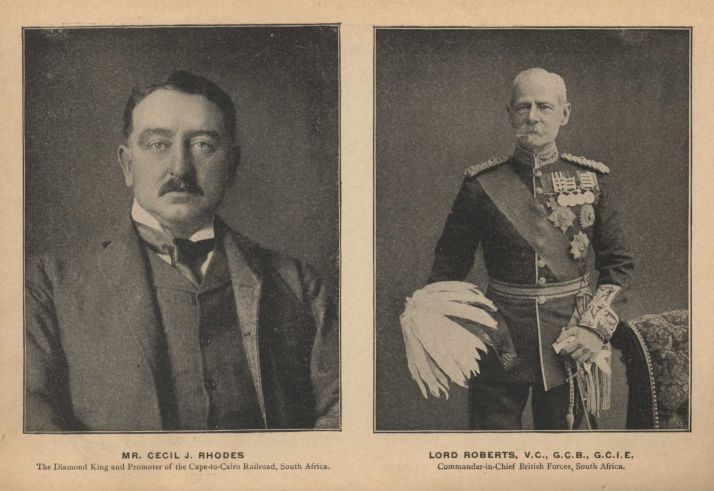
Certain self-appointed uitlanders representatives and British mine owners became increasingly angered and frustrated by their dealings with the Transvaal government. A Reform Committee (Transvaal) was formed to represent the uitlanders.

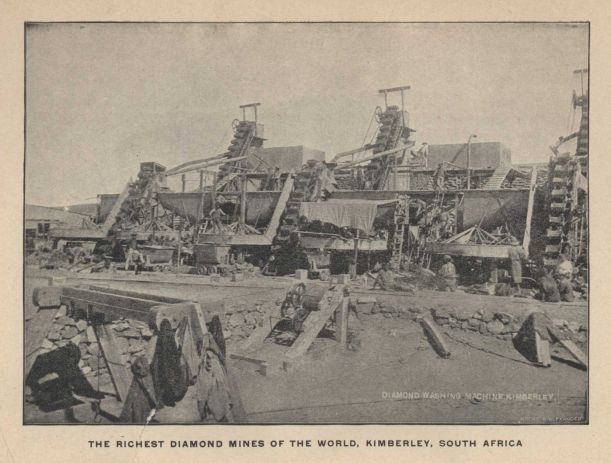
Jameson Raid
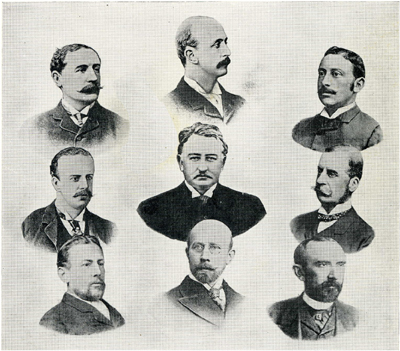
In 1895, a plan was hatched with the connivance of the Cape Prime Minister Cecil Rhodes, Johannesburg gold magnate Alfred Beit, and Sir Alfred Milner (British High Commissioner for South Africa and Lieutenant Governor of the Cape) to liberate Johannesburg from the control of the Transvaal government. A column of 600 armed men (mainly made up of his Rhodesian and Bechuanaland policemen) was led by Dr. Leander Starr Jameson (the Administrator in Rhodesia of the British South Africa Company (or "Chartered Company") of which Cecil Rhodes was the Chairman) over the border from Bechuanaland towards Johannesburg. The column was equipped with six Maxim machine guns, two 7-pounder mountain guns, and a 12½ pounder field piece. The plan was to make a three-day dash to Johannesburg before the Boer commandos could mobilise, and once there, trigger an uprising by the primarily British expatriate workers (uitlanders) organised by the Reform Committee. However, the Transvaal authorities had advance warning of the Jameson Raid and tracked it from the moment it crossed the border. Four days later, the weary and dispirited column was surrounded near Krugersdorp within sight of Johannesburg. After a brief skirmish in which the column lost 65 killed and wounded—while the Boers lost but one man—Jameson's men surrendered and were arrested by the Boers.[10]

The botched raid resulted in repercussions throughout southern Africa and in Europe. In Rhodesia, the departure of so many policemen enabled the Matabele and Mashona tribes to rise up against the Chartered Company, and the rebellion, known as the Second Matabele War, was suppressed only at great cost.

A few days after the raid, the German Kaiser sent a telegram ("Kruger telegram") congratulating President Kruger and the government of the South African Republic on their success, and when the text of this telegram was disclosed in the British press, it generated a storm of anti-German feeling. In the baggage of the raiding column, to the great embarrassment of the British, the Boers found telegrams from Cecil Rhodes and the other plotters in Johannesburg. Joseph Chamberlain, the British Colonial Secretary, quickly moved to condemn the raid, despite previously having approved Rhodes' plans to send armed assistance in the case of a Johannesburg uprising. Subsequently, Rhodes was severely censured at the Cape inquiry and the London parliamentary inquiry, and forced to resign as Prime Minister of the Cape and as Chairman of the Chartered Company for having sponsored the failed coup d'état.
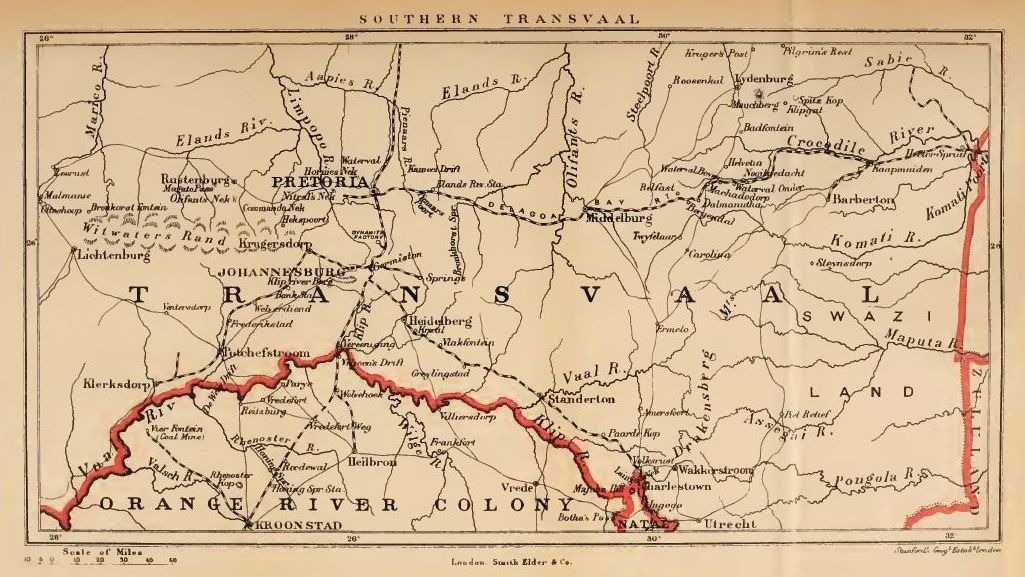
The Boer government handed their raid prisoners over to the British for trial. Dr. Jameson was tried in England for leading the raid. However, the British press and London society inflamed by anti-Boer and anti-German feeling and in a frenzy of jingoism, lionised Dr. Jameson and treated him as a hero. Although sentenced to 15 months imprisonment (which he served in Holloway), Jameson was later rewarded by being named Prime Minister of the Cape Colony (1904–08) and ultimately anointed as one of the founders of the Union of South Africa. For conspiring with Jameson, the uitlander members of the Reform Committee (Transvaal) were tried in the Transvaal courts and found guilty of high treason. The four leaders were sentenced to death by hanging, but this sentence was next day commuted to 15 years' imprisonment; and in June 1896, the other members of the Committee were released on payment of £2,000 each in fines, all of which were paid by Cecil Rhodes. One Reform Committee member, Frederick Gray, had committed suicide while in Pretoria gaol, on 16 May, and his death was a factor in softening the Transvaal government's attitude to the remaining prisoners.
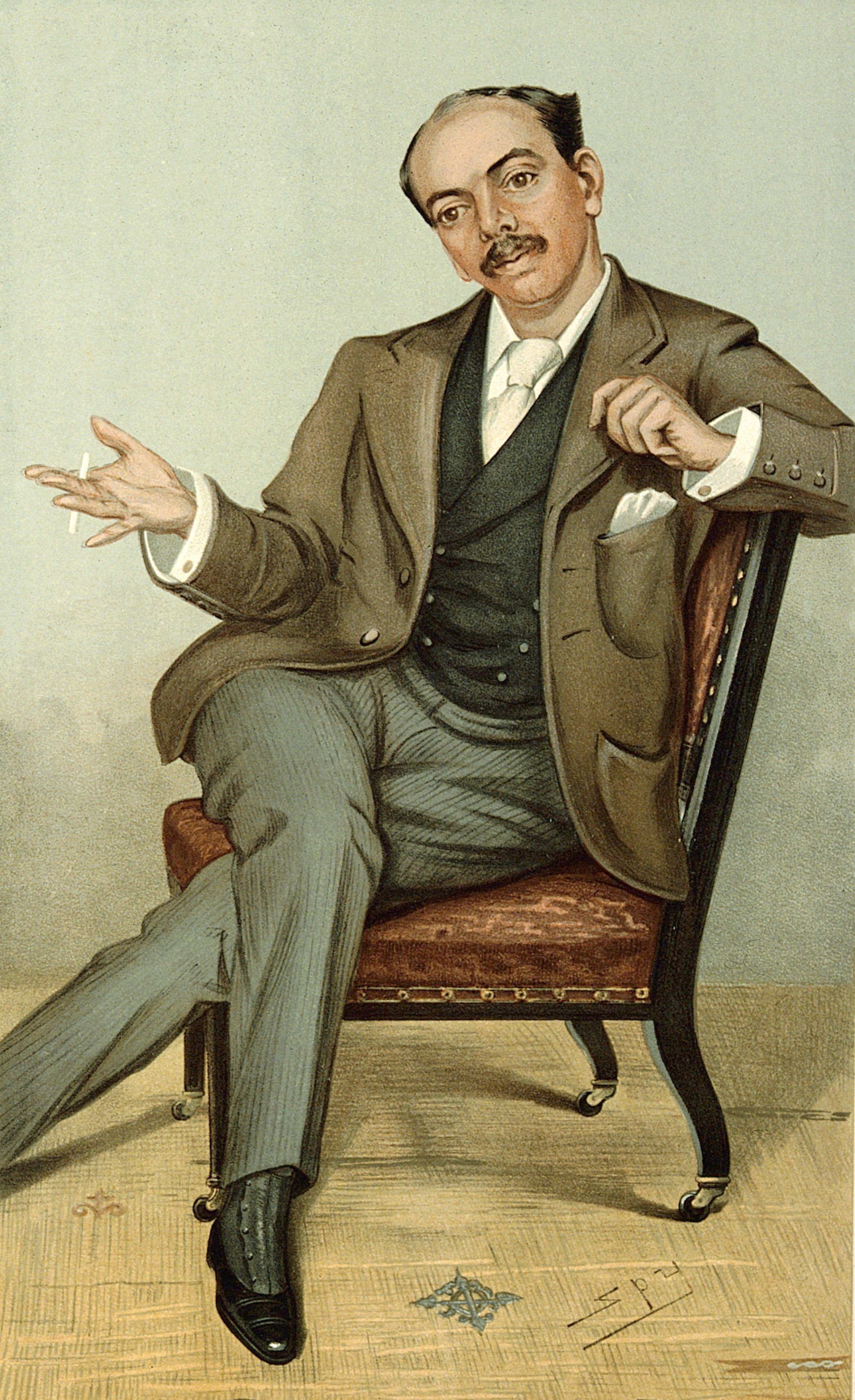
Jan C. Smuts wrote in 1906, "The Jameson Raid was the real declaration of war. . . . And that is so in spite of the four years of truce that followed . . .[the] aggressors consolidated their alliance . . . the defenders on the other hand silently and grimly prepared for the inevitable."[16]
Escalation and war
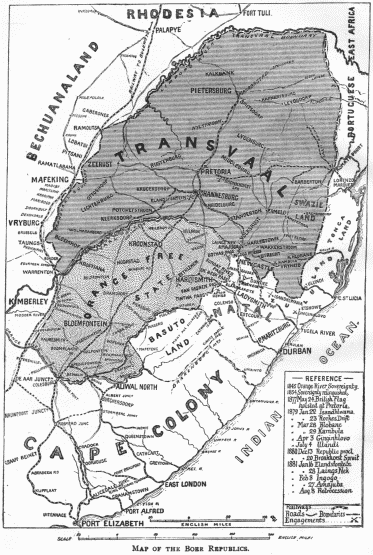
The Jameson Raid alienated many Cape Afrikaners from the British, and united the Transvaal Boers behind President Kruger and his government. It also had the effect of drawing the Transvaal and the Orange Free State (led by President Martinus Theunis Steyn) together in opposition to perceived British imperialism. In 1897, a military pact was concluded between the two republics. President Paul Kruger proceeded to re-equip the Transvaal army, and imported 37,000 of the latest magazine Mauser rifles, and some 40 to 50 million rounds of ammunition.[17] The best modern European artillery was also purchased.

By October 1899 the Transvaal State Artillery had 73 guns, of which 59 of them were new, including four 155-mm Creusot fortress guns, and 25 37mm Maxim Nordenfeldt guns.[18] The Transvaal army had been transformed; approximately 25,000 men equipped with modern rifles and artillery could mobilise within two weeks. However, President Kruger's victory in the Jameson Raid incident did nothing to resolve the fundamental problem; the impossible dilemma continued, namely how to make concessions to the uitlanders without surrendering the independence of the Transvaal.


The failure to gain improved rights for uitlanders became a pretext for war and a justification for a major military buildup in the Cape Colony. The case for war was developed and espoused as far away as the Australian colonies.[19] Several key British colonial leaders favoured annexation of the independent Boer republics. These figures included Cape Colony Governor Sir Alfred Milner, Cape Prime Minister Cecil Rhodes, British Colonial Secretary Joseph Chamberlain, and mining syndicate owners or Randlords (nicknamed the gold bugs), such as Alfred Beit, Barney Barnato, and Lionel Phillips. Confident that the Boers would be quickly defeated, they planned and organised a short war, citing the uitlanders' grievances as the motivation for the conflict.
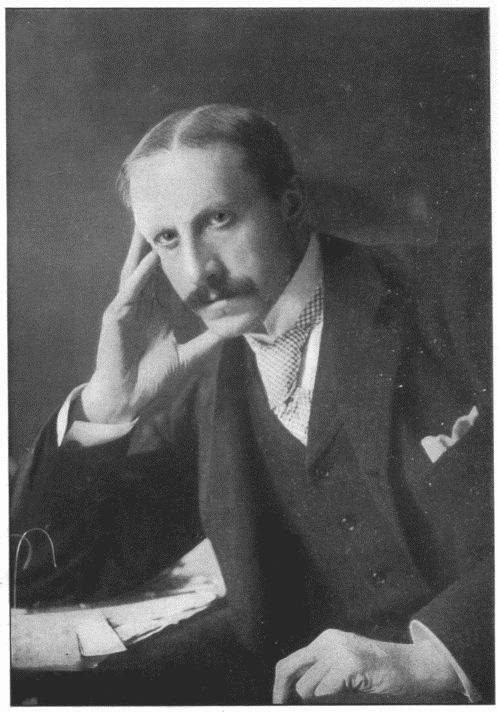
Their influence with the British government was, however, limited. Lord Salisbury, the Prime Minister, despised jingoism and jingoists. He also distrusted the abilities of the British army. Yet he led Britain into war for three main reasons: because he believed the British government had an obligation to British South Africans; because he thought that the Transvaal, the Orange Free State, and the Cape Boers aspired to a Dutch South Africa, and that the achievement of such a state would damage Britain's imperial prestige around the world; and because of the Boers' treatment of black South Africans.[20] (Salisbury had referred to the London Convention of 1884, after the British defeat, as an agreement 'really in the interest of slavery'.)[21] Salisbury was not alone in this concern over the treatment of black South Africans; Roger Casement, already well on the way to becoming an Irish Nationalist, was nevertheless happy to gather intelligence for the British against the Boers because of their treatment of black Africans.[22]

Given this sense of caution among key members of the British cabinet and of the army, it is even harder to understand why the British government went against the advice of its generals (such as Wolsely) to send substantial reinforcements to South Africa before war broke out. One strong argument is that Lansdowne, Secretary of State for War, did not believe the Boers were preparing for war, and also believed that if Britain were to send large numbers of troops, it would strike too aggressive a posture and so prevent a negotiated settlement being reached or even encourage a Boer attack.[23]
![[Illustration. Caption: The above are reproductions of photographs of
the documents now in possession of the Transvaal Government. For the
report of the expert, Mr. T.H. Gurrin, as submitted to the Select
Committee of the House of Commons, see Appendix L.]](http://www.gutenberg.org/files/16494/16494-h/images/transv01.png)
President Steyn of the Orange Free State invited Milner and Kruger to attend a conference in Bloemfontein. The conference started on 30 May 1899, but negotiations quickly broke down, despite Kruger's offer of concessions. In September 1899, Chamberlain sent an ultimatum demanding full equality for British citizens resident in Transvaal. Kruger, seeing that war was inevitable, simultaneously issued his own ultimatum prior to receiving Chamberlain's. This gave the British 48 hours to withdraw all their troops from the border of Transvaal; otherwise the Transvaal, allied with the Orange Free State, would declare war.
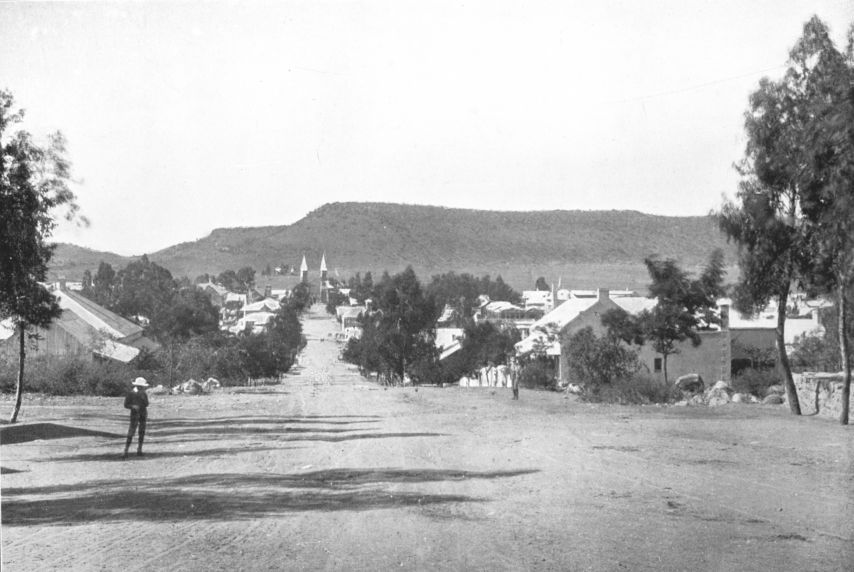
News of the ultimatum reached London on the day it expired. Outrage and laughter were the main responses. The editor of the Times laughed out loud when he read it, saying 'an official document is seldom amusing and useful yet this was both.' The Times denounced the ultimatum as an 'extravagant farce.' The Globe denounced this 'trumpery little state.' Most editorials were similar to the Daily Telegraph, which declared: 'of course there can only be one answer to this grotesque challenge. Kruger has asked for war and war he must have!'
Such views were far from those of the British government, and from those in the army. To most sensible observers, army reform had been a matter of pressing concern from the 1870s, constantly put off because the British public did not want the expense of a larger, more professional army, and because a large home army was not politically welcome. Lord Salisbury, the Prime Minister, had had to explain to a surprised Queen Victoria that: 'We have no army capable of meeting even a second-class Continental Power.'[24]

First phase: The Boer offensive (October – December 1899)
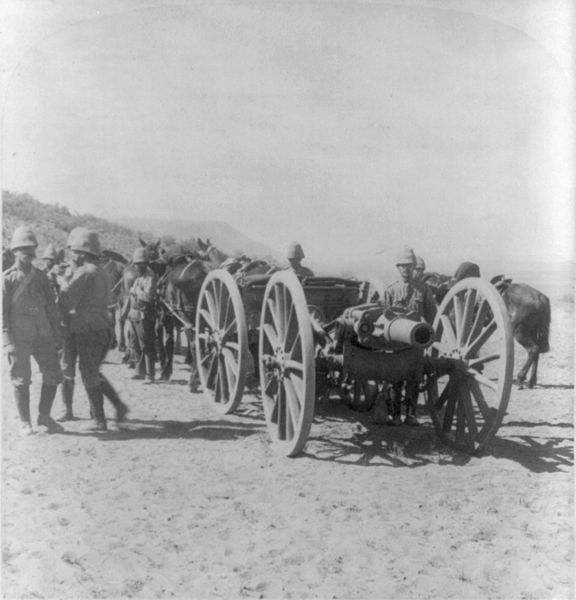
War was declared on 11 October 1899 with a Boer offensive into the British-held Natal and Cape Colony areas. The Boers had no problems with mobilisation, since the fiercely independent Boers had no regular army units, apart from the Staatsartillerie (Afrikaans for 'States Artillery') of both republics. As with the First Boer War, since the Boers were civilian militia, each man wore what he wished, usually his everyday dark-grey, light-grey, neutral-coloured, or earthtone khaki farming clothes—often a jacket, trousers and slouch hat. Only the members of the Staatsartillerie wore light green uniforms.

When danger loomed, all the burghers (citizens) in a district would form a military unit called a commando and would elect officers. A full-time official titled a Veldkornet maintained muster rolls, but had no disciplinary powers. Each man brought his own weapon, usually a hunting rifle, and his own horse. Those who could not afford a gun were given one by the authorities.[18] (See also the arms procurement mentioned above.) The Presidents of the Transvaal and Orange Free State simply signed decrees to concentrate within a week and the Commandos could muster between 30,000–40,000 men.[25]

The average Boer nevertheless was not thirsty for war. Many did not look forward to fighting against fellow Christians and, by and large, fellow Christian Protestants. Many may have had an overly optimistic sense of what the war would involve, imagining that victory could be won as easily as in the First South African War.[26] Many, including many generals, also had a sense that their cause was holy and just, and blessed by God.[27]
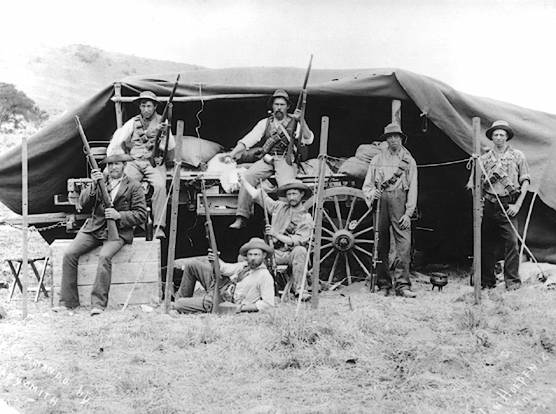
It rapidly became clear that the Boer forces presented the British forces with a severe tactical challenge. What the Boers presented was a mobile and innovative approach to warfare, drawing on their experiences from the First Boer War. The average Boers who made up their Commandos were farmers who had spent almost all their working life in the saddle, both as farmers and hunters. They had to depend on the pot on their horse and their rifle and were skilled stalkers and marksmen. As hunters they had learned to fire from cover, from a prone position and to make the first shot count, knowing that if they missed, the game would either be long gone or could charge and potentially kill them.

At community gatherings, target shooting was a major sport, and they practised shooting at targets such as hens' eggs perched on posts 100 metres (100 yd) away. They made expert mounted infantry, using every scrap of cover, from which they could pour in a destructive fire using their modern, smokeless, Mauser rifles. Furthermore, in preparation for hostilities, the Boers had acquired around one hundred of the latest Krupp field guns, all horse-drawn and dispersed among the various Commando groups, and several Le Creusot "Long Tom" siege guns. The Boers' skill in adapting themselves to becoming first-rate artillerymen shows them to have been a versatile adversary.[28] The Transvaal also had an intelligence service that stretched across South Africa, and of whose extent and efficiency the British were unaware.[29]

The Boers struck first on 12 October at Kraaipan, an attack that heralded the invasion of the Cape Colony and Colony of Natal between October 1899 and January 1900. With elements of both speed and surprise the Boer drove quickly towards the major British garrison at Ladysmith and the smaller ones at Mafeking and Kimberley. The quick Boer mobilisation resulted in early military successes against the scattered British forces.

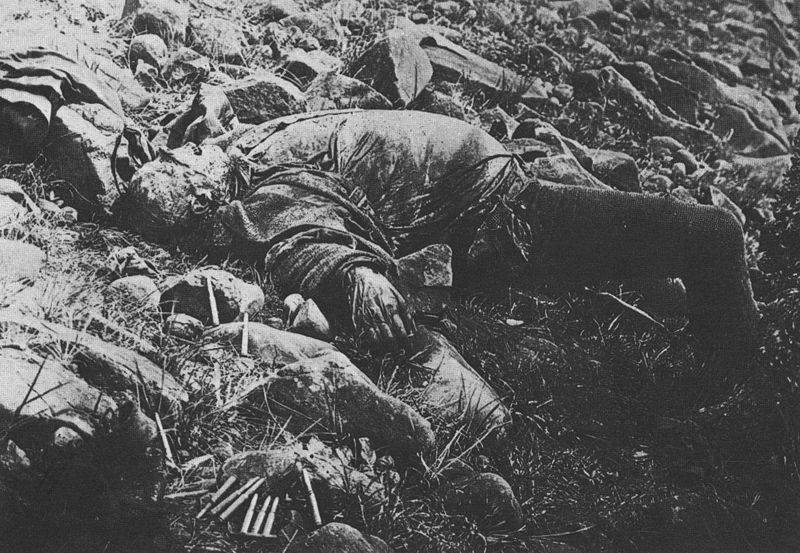
Sir George Stuart White, commanding the British division at Ladysmith, had unwisely allowed Major-General Penn Symons to throw a brigade forward to the coal-mining town of Dundee (also reported as Glencoe), which was surrounded by hills. This became the site of the first engagement of the war, the Battle of Talana Hill.

Boer guns began shelling the British camp from the summit of Talana Hill at dawn on 20 October. Penn Symons immediately counter-attacked. His infantry drove the Boers from the hill, but at the cost of 446 British casualties including Penn Symons himself.



Another Boer force occupied Elandslaagte, which lay between Ladysmith and Dundee. The British under Major General John French and Colonel Ian Hamilton attacked to clear the line of communications to Dundee. The resulting Battle of Elandslaagte was a clear-cut British tactical victory, but Sir George White feared that more Boers were about to attack his main position and ordered a chaotic retreat from Elandslaagte, throwing away any advantage gained. The detachment from Dundee was compelled to make an exhausting cross-country retreat to rejoin White's main force.

As Boers surrounded Ladysmith and opened fire on the town with siege guns, White ordered a major sortie against the Boer artillery positions. The result was a disaster, with 140 men killed and over 1,000 captured. The Siege of Ladysmith began, and was to last several months.
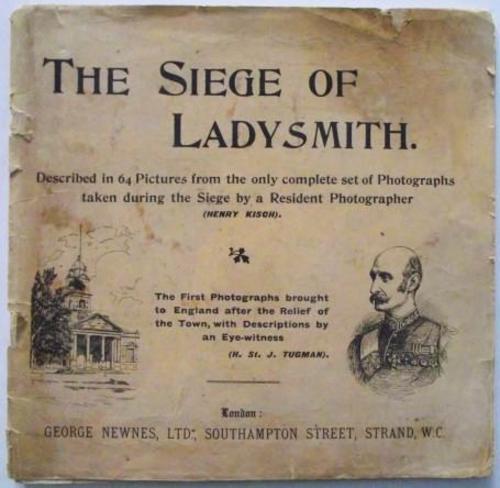
Meanwhile to the north-west at Mafeking, on the border with Transvaal, Colonel Robert Baden-Powell had raised two regiments of local forces amounting to some 1,200 men in order to attack and create diversions if things further south went amiss. Mafeking, being a railway junction, provided good supply facilities and was the obvious place for Baden-Powell to fortify in readiness for such attacks. However, instead of being the aggressor Baden-Powell and Mafeking were forced to defend when 6,000 Boer, commanded by Piet Cronje, attempted a determined assault on the town. But this quickly subsided into a desultory affair with the Boers prepared to starve the stronghold into submission, and so, on 13 October, began the 217-day Siege of Mafeking.

Lastly, over 360 kilometres (220 mi) to the south of Mafeking lay the diamond mining city of Kimberley, which was also subjected to a siege. Although not militarily significant, it nonetheless represented an enclave of British imperialism on the borders of the Orange Free State and was hence an important Boer objective. From early November about 7,500 Boer began their siege, again content to starve the town into submission. Despite Boer shelling, the 40,000 inhabitants, of which only 5,000 were armed, were under little threat as the town was well-stocked with provisions. The garrison was commanded by Lieutenant Colonel Robert Kekewich, although Cecil Rhodes was also a prominent figure in the defense.

Siege life took its toll on both the defending soldiers and the civilians in the cities of Mafeking, Ladysmith, and Kimberley as food began to grow scarce after a few weeks. In Mafeking, Sol Plaatje wrote, "I saw horseflesh for the first time being treated as a human foodstuff." The cities under siege also dealt with constant artillery bombardment, making the streets a dangerous place. Near the end of the siege of Kimberley, it was expected that the Boers would intensify their bombardment, so Rhodes displayed a notice encouraging people to go down into shafts of the Kimberley Mine for protection. The townspeople panicked, and people surged into the mine-shafts constantly for a 12-hour period. Although the bombardment never came, this did nothing to diminish the distress of the civilians. The most well-heeled of the townspeople, such as Cecil Rhodes, sheltered in the Sanatorium, site of the present-day McGregor Museum; the poorer residents, notably the black population, did not have any shelter from the shelling.

In retrospect, the Boer decision to commit themselves to sieges (Sitzkrieg) was a mistake, and one of the best illustrations of the Boers' lack of strategic vision. Historically, it had little in its favour. Of the seven sieges in the First Boer War, the Boers had won none. More importantly, it handed the initiative back to the British and allowed them time to recover, which they then did. Generally speaking, throughout the campaign, the Boers were too defensive and passive, wasting the opportunities they had for victory. Yet that passiveness also testified to the fact that they had no desire to conquer British territory, but only to preserve their ability to rule in their own territory.[30]
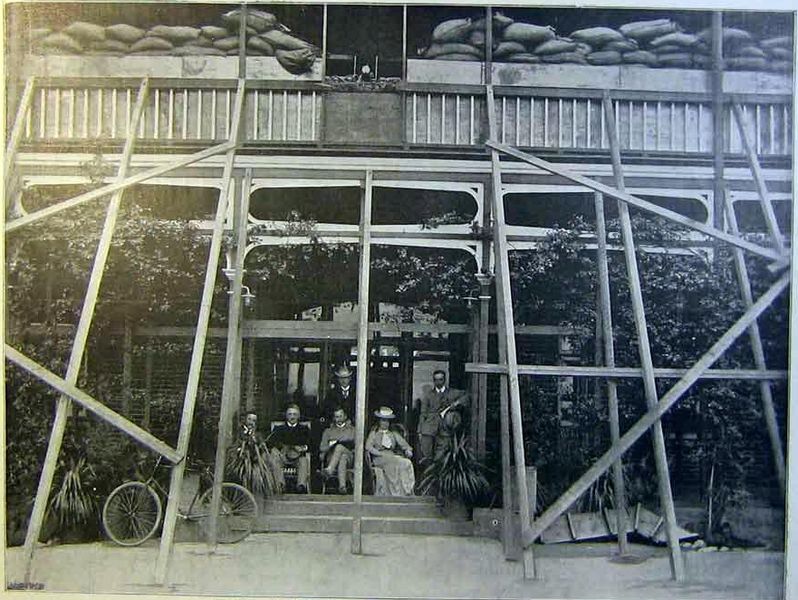
First British relief attempts

It was at this point that General Sir Redvers Henry Buller, a much respected commander, arrived in South Africa with major British reinforcements (including an army corps of three divisions). Buller originally intended an offensive straight up the railway line leading from Cape Town through Bloemfontein to Pretoria. Finding on arrival that the British troops already in South Africa were under siege, he split his army corps into several widely spread detachments, to relieve the besieged garrisons. One division, led by Lieutenant General Lord Methuen, was to follow the Western Railway to the north and relieve Kimberley and Mafeking. A smaller force of about 3,000 led by Major General William Gatacre, was to push north toward the railway junction at Stormberg, to secure the Cape Midlands district from Boer raids and local rebellions by Boer inhabitants. Finally, Buller himself would lead the major part of the army corps to relieve Ladysmith to the east.

The initial results of this offensive were mixed, with Methuen winning several bloody skirmishes at Belmont on 23 November, at Graspan on 25 November, and at a larger conflict, Modder River on 28 November resulting in British losses of 71 dead and over 400 wounded. British commanders had trained on the lessons of the Crimean War, and were adept at battalion and regimental set pieces with columns manoeuvring in jungles, deserts and mountainous regions. What they entirely failed to comprehend, however, was both the impact of destructive fire from trench positions and the mobility of cavalry raids, both of which had been developed in the American Civil War. The British troops went to war with what would prove to be antiquated tactics, and in some cases antiquated weapons,[31] against the mobile Boer forces with the destructive fire of their modern Mausers, the latest Krupp field guns, and their innovative tactics.

The middle of December was disastrous for the British army. In a period known as Black Week (10 – 15 December 1899), the British suffered a series of losses on each of the three major fronts.

On 10 December, General Gatacre tried to recapture Stormberg railway junction about 50 miles (80 km) south of the Orange River. Gatacre's attack was marked by administrative and tactical blunders, and the Battle of Stormberg ended in a British defeat, with 135 killed and wounded, and two guns and over 600 troops captured.

At the Battle of Magersfontein on 11 December, Methuen's 14,000 British troops attempted to capture a Boer position in a dawn attack to relieve Kimberley. This too turned into a disaster when the Highland Brigade became pinned down by accurate Boer fire. After suffering from intense heat and thirst for nine hours, they eventually broke in ill-disciplined retreat. The Boer commanders, Koos de la Rey and Piet Cronje, had ordered trenches to be dug in an unconventional place to fool the British and to give their riflemen a greater firing range. The plan worked and this tactic helped write the doctrine of the supremacy of the defensive position, using modern small arms and trench fortifications.[32] The British lost 120 killed and 690 wounded and were prevented from relieving Kimberley and Mafeking.

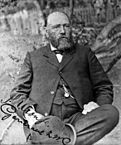


A British soldier encapsulated the soldiers' view of the defeat:
"Such was the day for our regiment
Dread the revenge we will take.
Dearly we paid for the blunder -
A drawing-room General’s mistake.
Why weren’t we told of the trenches?
Why weren’t we told of the wire?
Why were we marched up in column,
May Tommy Atkins enquire…." [33]
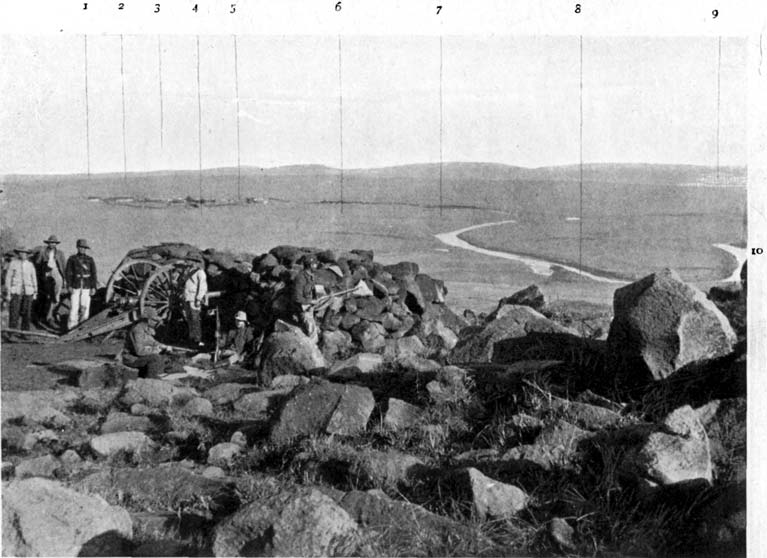
However, the nadir of Black Week was the Battle of Colenso on 15 December where 21,000 British troops commanded by Buller himself, attempted to cross the Tugela River to relieve Ladysmith where 8,000 Transvaal Boers, under the command of Louis Botha, were awaiting them. Through a combination of artillery and accurate rifle fire, and a better use of the ground, the Boers repelled all British attempts to cross the river. After his first attacks failed, Buller broke off the battle and ordered a retreat, abandoning many wounded men, several isolated units and ten field guns to be captured by Botha's men. Buller's forces lost 145 men killed and 1,200 missing or wounded. The Boers suffered 40 casualties, including only 8 killed.[34]

Second phase: The British offensive of January to September 1900

The British government took these defeats badly and with the sieges still continuing was compelled to send two more divisions plus large numbers of colonial volunteers. By January 1900 this would become the largest force Britain had ever sent overseas, amounting to some 180,000 men with further reinforcements being sought.

While watching for these reinforcements, Buller made another bid to relieve Ladysmith by crossing the Tugela west of Colenso. Buller's subordinate, Major General Charles Warren, successfully crossed the river, but was then faced with a fresh defensive position centred on a prominent hill known as Spion Kop. In the resulting Battle of Spion Kop, British troops captured the summit by surprise during the early hours of 24 January 1900, but as the early morning fog lifted they realised too late that they were overlooked by Boer gun emplacements on the surrounding hills. The rest of the day resulted in a disaster caused by poor communication between Buller and his commanders. Between them they issued contradictory orders, on the one hand ordering men off the hill, while other officers ordered fresh reinforcements to defend it. The result was 350 men killed and nearly 1,000 wounded and a retreat back across the Tugela River into British territory. There were nearly 300 Boer casualties.
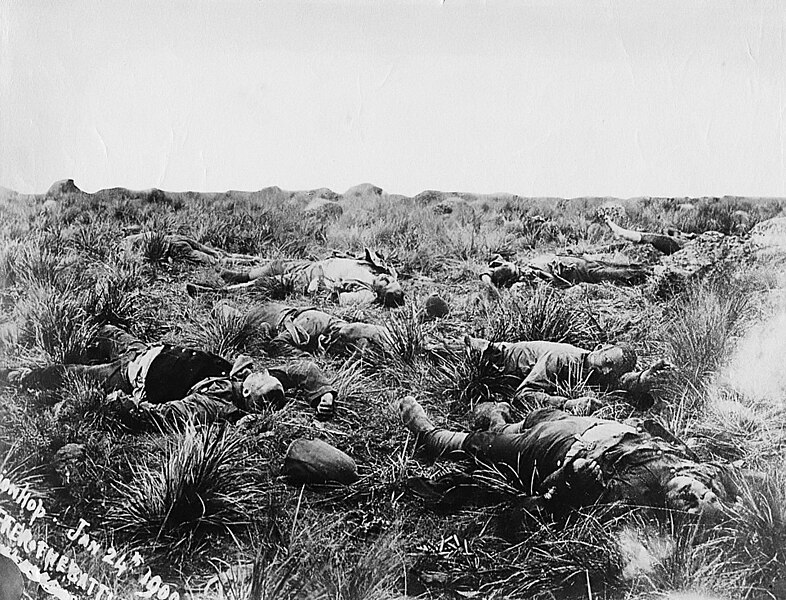
Buller attacked Louis Botha again on 5 February at Vaal Krantz and was again defeated. Buller withdrew early when it appeared that the British would be isolated in an exposed bridgehead across the Tugela, and was nicknamed "Sir Reverse" by some of his officers.

By taking command in person in Natal, Buller had allowed the overall direction of the war to drift. Because of concerns about his performance and negative reports from the field, he was replaced as Commander in Chief by Field Marshal Lord Roberts. Like Buller, Roberts first intended to attack directly along the Cape Town – Pretoria railway but, again like Buller, was forced to relieve the beleaguered garrisons. Leaving Buller in command in Natal, Roberts massed his main force near the Orange River and along the Western Railway behind Methuen's force at the Modder River, and prepared to make a wide outflanking move to relieve Kimberley.

Except in Natal, the war had stagnated. Other than a single attempt to storm Ladysmith, the Boers made no attempt to capture the besieged towns. In the Cape Midlands, the Boers did not exploit the British defeat at Stormberg, and were prevented from capturing the railway junction at Colesberg. In the dry summer, the grazing on the veld became parched, weakening the Boers' horses and draught oxen, and many Boer families joined their menfolk in the siege lines and laagers (encampments), fatally encumbering Cronje's army.

Roberts launched his main attack on 10 February 1900 and although hampered by a long supply route, managed to outflank the Boers defending Magersfontein. On 14 February, a cavalry division under Major General John French launched a major attack to relieve Kimberley. Although encountering severe fire, a massed cavalry charge split the Boer defences on 15 February, opening the way for French to enter Kimberley that evening, ending its 124 days’ siege.

Meanwhile, Roberts pursued Piet Cronje’s 7,000-strong force, which had abandoned Magersfontein to head for Bloemfontein. General French’s cavalry was ordered to assist in the pursuit by embarking on an epic 30-mile drive towards Paardeberg where Cronje was attempting to cross the Modder River. At the Battle of Paardeberg from 18 to 27 February, Roberts then surrounded General Piet Cronje's retreating Boer army. On 17 February, a pincer movement involving both French’s cavalry and the main British force attempted to take the entrenched position, but the frontal attacks were uncoordinated and so were easily repulsed by the Boers. Finally, Roberts resorted to bombarding Cronje into submission, but it took a further ten precious days and with the British troops using the polluted Modder River as water supply, resulting in a typhoid epidemic killing many troops. General Cronje was forced to surrender at Surrender Hill with 4000 men.
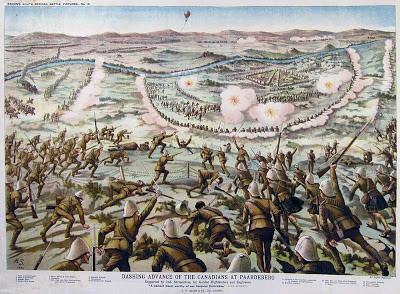
In Natal, the Battle of the Tugela Heights, which started on 14 February was Buller's fourth attempt to relieve Ladysmith. Despite reinforcements his progress was painfully slow against stiff opposition. However, on 26 February, after much deliberation, Buller used all his forces in one all-out attack for the first time and at last succeeded in forcing a crossing of the Tugela, and defeated Botha's outnumbered forces north of Colenso. After a siege lasting 118 days, the Relief of Ladysmith was effected, the day after Cronje surrendered, but at a total cost of 7,000 British casualties.

After a succession of defeats, the Boers realised that against such overwhelming superiority of troops, they had little chance of defeating the British and so became demoralised. Roberts then advanced into the Orange Free State from the west, putting the Boers to flight at the Battle of Poplar Grove and capturing Bloemfontein, the capital, unopposed on 13 March with the Boer defenders escaping and scattering. Meanwhile, he detached a small force to relieve Baden-Powell, and the Relief of Mafeking on 18 May 1900 provoked riotous celebrations in Britain.


On 28 May, the Orange Free State was annexed and renamed the Orange River Colony.
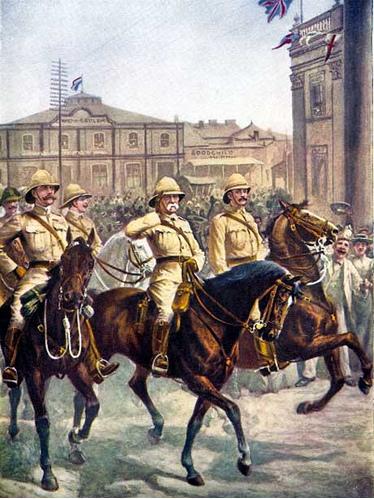
After being forced to delay for several weeks at Bloemfontein due to a shortage of supplies and enteric fever (caused by poor hygiene, drinking bad water at Paardeburg and appalling medical care),[35] Roberts resumed his advance. He was forced to halt again at Kroonstad for 10 days, due once again to the collapse of his medical and supply systems, but finally captured Johannesburg on 31 May and the capital of the Transvaal, Pretoria, on 5 June. The first into Pretoria, was Lt. William Watson of the New South Wales Mounted Rifles, who persuaded the Boers to surrender the capital.[36] (Before the war, the Boers had constructed several forts south of Pretoria, but the artillery had been removed from the forts for use in the field, and in the event the Boers abandoned Pretoria without a fight).
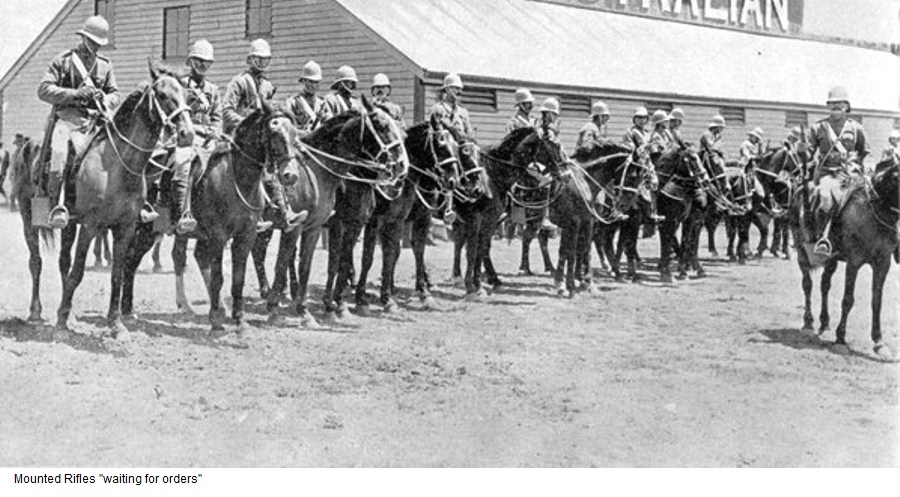
This allowed the Roberts to declare the war over, having won the principal cities and so, on 3 September 1900, the South African Republic was formally annexed.

British observers believed the war to be all but over after the capture of the two capital cities. However, the Boers had earlier met at the temporary new capital of the Orange Free State, Kroonstad, and planned a guerrilla campaign to hit the British supply and communication lines. The first engagement of this new form of warfare was at Sanna's Post on 31 March where 1,500 Boers under the command of Christiaan De Wet attacked Bloemfontein's waterworks about 23 miles (37 km) east of the city, and ambushed a heavily escorted convoy, which caused 155 British casualties and the capture of seven guns, 117 wagons, and 428 British troops.[37]

After the fall of Pretoria, one of the last formal battles was at Diamond Hill on 11 – 12 June, where Roberts attempted to drive the remnants of the Boer field army beyond striking distance of Pretoria. Although Roberts drove the Boers from the hill, the Boer commander, Louis Botha, did not regard it as a defeat, for he inflicted more casualties on the British (totalling 162 men) while suffering around 50 casualties.

The set-piece period of the war now largely gave way to a mobile guerrilla war, but one final operation remained. President Kruger and what remained of the Transvaal government had retreated to eastern Transvaal. Roberts, joined by troops from Natal under Buller, advanced against them, and broke their last defensive position at Bergendal on 26 August. As Roberts and Buller followed up along the railway line to Komatipoort, Kruger sought asylum in Portuguese East Africa (modern Mozambique). Some dispirited Boers did likewise, and the British gathered up much war material. However, the core of the Boer fighters under Botha easily broke back through the Drakensberg mountains into the Transvaal highveld after riding north through the bushveld. Under the new conditions of the war, heavy equipment was no use to them, and therefore no great loss.

As Roberts's army occupied Pretoria, the Boer fighters in the Orange Free State had been driven into a fertile area known as the Brandwater Basin in the north east of the Republic. This offered only temporary sanctuary, as the mountain passes leading to it could be occupied by the British, trapping the Boers. A force under General Archibald Hunter set out from Bloemfontein to achieve this in July 1900. The hard core of the Free State Boers under Christiaan De Wet, accompanied by President Steyn, left the basin early. Those remaining fell into confusion and most failed to break out before Hunter trapped them. 4,500 Boers surrendered and much equipment was captured but as with Roberts's drive against Kruger at the same time, these losses were of relatively little consequence, as the hardcore of the Boer armies and their most determined and active leaders remained at large.

From the Basin, Christiaan De Wet headed west. Although hounded by British columns, he succeeded in crossing the Vaal into western Transvaal, to allow Steyn to travel to meet the Transvaal leaders.
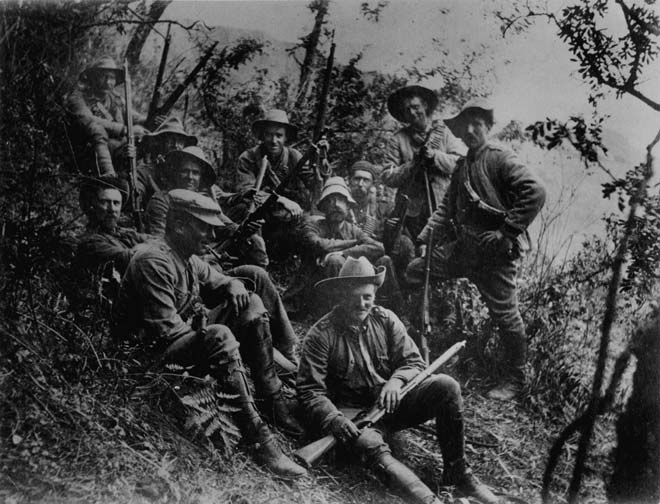
There was much sympathy for the Boers on mainland Europe and in October, President Kruger and members of the Transvaal government left Portuguese East Africa on the Dutch warship De Gelderland, sent by the Queen of the Netherlands Wilhelmina, who had simply ignored the British naval blockade of South Africa.

Paul Kruger's wife, however, was too ill to travel and remained in South Africa where she died on 20 July 1901 without seeing her husband again. President Kruger first went to Marseille and then on to The Netherlands where he stayed for a while before moving finally to Clarens, Switzerland, where he died in exile on 14 July 1904.
POWs sent overseas

The first sizeable batch of Boer prisoners of war taken by the British consisted of those captured at the Battle of Elandslaagte on 21 October 1899. At first, many were put on ships, but as numbers grew, the British decided they did not want them kept locally. The capture of 400 POWs in February 1900 was a key event, which made the British realise they could not accommodate all POWs in South Africa.[38] The British feared they could be freed by sympathetic locals. Moreover, they already had trouble supplying their own troops in South Africa, and did not want the added burden of sending supplies for the POWs. Britain therefore chose to send many POWs overseas.

The first overseas (off African mainland) camps were opened in Saint Helena, which ultimately received about 5,000 POWs. About 5,000 POWs were sent to Ceylon.[39] Other POWs were sent to Bermuda and India. No evidence exists of Boer POWs being sent to the Dominions of the British Empire such as Australia, Canada or New Zealand.[38]

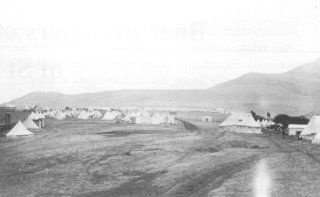
In all, about 26,000 POWs were sent overseas.[40]
Third phase: Guerrilla war (September 1900 – May 1902)
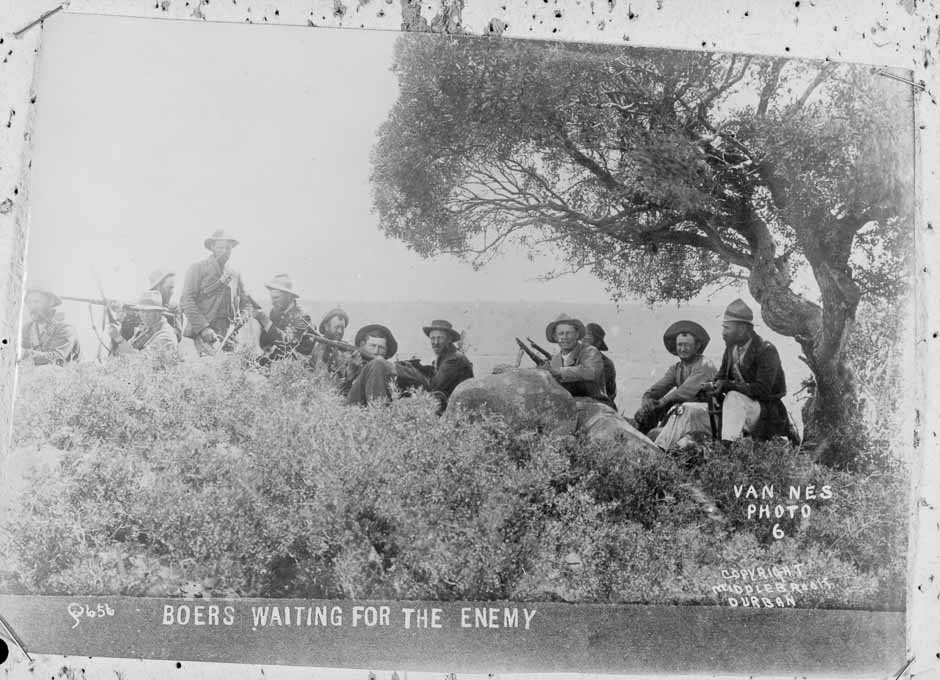
By September 1900, the British were nominally in control of both Republics, with the exception of the northern part of Transvaal. However, they soon discovered that they only controlled the territory their columns physically occupied. The Boer commanders adopted guerrilla warfare tactics, primarily conducting raids against infrastructure, resource and supply targets, all aimed at disrupting the operational capacity of the British army.
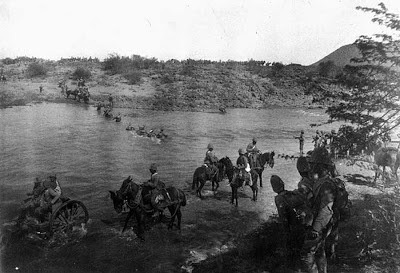
Each Boer commando unit was sent to the district from which its members had been recruited, which meant that they could rely on local support and personal knowledge of the terrain and the towns within the district thereby enabling them to live off the land. Their orders were simply to act against the British whenever possible. Their tactics were to strike fast and hard causing as much damage to the enemy as possible, and then to withdraw and vanish before enemy reinforcements could arrive. The vast distances of the Republics allowed the Boer commandos considerable freedom to move about and made it impossible for the 250,000 British troops to control the territory effectively using columns alone. As soon as a British column left a town or district, British control of that area faded away.
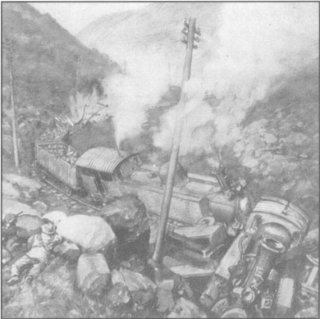
The Boer commandos were especially effective during the initial guerrilla phase of the war because Roberts had assumed that the war would end with the capture of the Boer capitals and the dispersal of the main Boer armies. Many British troops were therefore redeployed out of the area, and had been replaced by lower-quality contingents of Imperial Yeomanry and locally raised irregular corps.

From late May 1900, the first successes of the Boer strategy were at Lindley (where 500 Yeomanry surrendered), and at Heilbron (where a large convoy and its escort were captured) and other skirmishes resulting in 1,500 British casualties in less than ten days. In December 1900, De la Rey and Christiaan Beyers mauled a British brigade at Nooitgedacht. As a result of these and other Boer successes, the British, led by Lord Kitchener, mounted three extensive searches for De Wet, but without success. However, by its very nature the guerrilla war was sporadic, poorly planned and with little overall objective in mind except to harass the British. This led to a disorganised pattern of scattered engagements throughout the region.
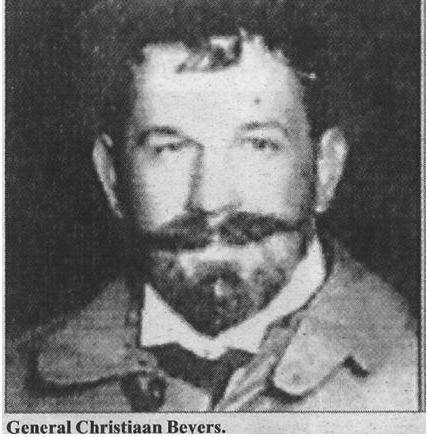
British response

The British were forced to quickly revise their tactics. They concentrated on restricting the freedom of movement of the Boer commandos and depriving them of local support. The railway lines had provided vital lines of communication and supply, and as the British had advanced across South Africa, they had used armoured trains and had established fortified blockhouses at key points.[41] They now built additional blockhouses (each housing 6–8 soldiers) and fortified these to protect supply routes against Boer raiders. Eventually some 8,000 such blockhouses were built across the two South African republics, radiating from the larger towns. Each blockhouse cost between £800 to £1,000 and took about three months to build. However, they proved very effective. Not one bridge where one of these blockhouses was sited and manned was blown.[41]
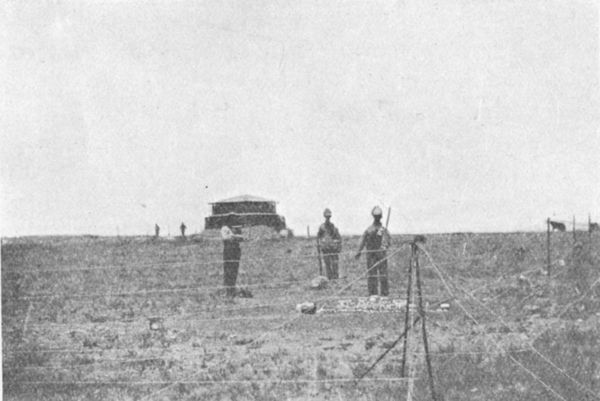
The blockhouse system required an enormous number of troops to maintain. Well over 50,000 British troops, or 50 battalions, were involved in blockhouse duty, greater than the approximately 30,000 Boers in the field during the guerrilla phase. In addition, up to 16,000 Africans were used both as armed guards and to patrol the line at night.[41] The Army linked the blockhouses with barbed wire fences to parcel up the wide veld into smaller areas. "New Model" drives were mounted under which a continuous line of troops could sweep an area of veld bounded by blockhouse lines, unlike the earlier inefficient scouring of the countryside by scattered columns.

The British also implemented a "scorched earth" policy under which they targeted everything within the controlled areas that could give sustenance to the Boer guerrillas with a view to making it harder and harder for the Boers to survive.
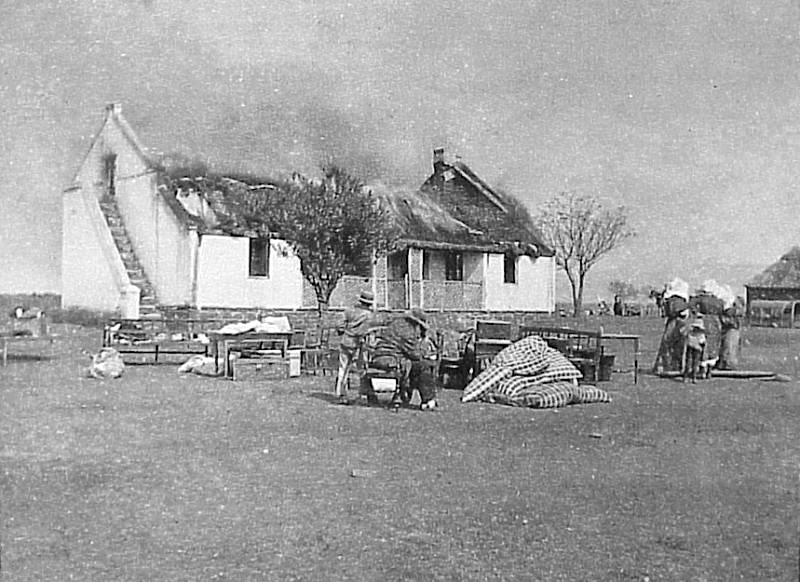
As British troops swept the countryside, they systematically destroyed crops, burned homesteads and farms, poisoned wells, and interned Boer and African women, children and workers in concentration camps. Finally, the British also established their own mounted raiding columns in support of the sweeper columns. These were used to rapidly follow and relentlessly harass the Boers with a view to delaying them and cutting off escape, while the sweeper units caught up. Many of the 90 or so mobile columns formed by the British to participate in such drives were a mixture of British and colonial troops, but they also had a large minority of armed Africans. The total number of armed Africans serving with these columns has been estimated at approximately 20,000.

The British Army also made use of Boer auxiliaries who had been persuaded to change sides and enlist as "National Scouts". Serving under the command of General Andries Cronje, the National Scouts were despised as hensoppers (collaborators) but came to number a fifth of the fighting Afrikaners by the end of the War.[42]


The British utilised armoured trains throughout the War to deliver rapid reaction forces much more quickly to incidents (such as Boer attacks on blockhouses and columns) or to drop them off ahead of retreating Boer columns.


Concentration camps (1900–1902)

The term "concentration camp" was used to describe camps operated by the British in South Africa during this conflict, and the term grew in prominence during this period.

The camps had originally been set up by the British army as "refugee camps" to provide refuge for civilian families who had been forced to abandon their homes for whatever reason related to the war. However, when Kitchener succeeded Roberts as commander-in-chief in South Africa on 29 November 1900, the British army introduced new tactics in an attempt to break the guerrilla campaign and the influx of civilians grew dramatically as a result. Kitchener initiated plans to flush out guerrillas in a series of systematic drives, organised like a sporting shoot, with success defined in a weekly 'bag' of killed, captured and wounded, and to sweep the country bare of everything that could give sustenance to the guerrillas, including women and children.... It was the clearance of civilians—uprooting a whole nation—that would come to dominate the last phase of the war.[45]


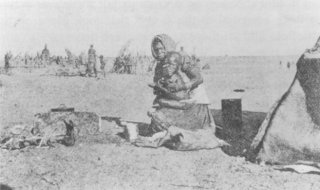

As Boer farms were destroyed by the British under their "Scorched Earth" policy—including the systematic destruction of crops and slaughtering of livestock, the burning down of homesteads and farms, and the poisoning of wells and salting of fields—to prevent the Boers from resupplying from a home base many tens of thousands of women and children were forcibly moved into the concentration camps. This was not the first appearance of internment camps. The Spanish had used internment in the Ten Years' War that led to the Spanish-American War, and the United States had used them to devastate guerrilla forces during the Philippine-American War. But the Boer War concentration camp system was the first time that a whole nation had been systematically targeted, and the first in which some whole regions had been depopulated.
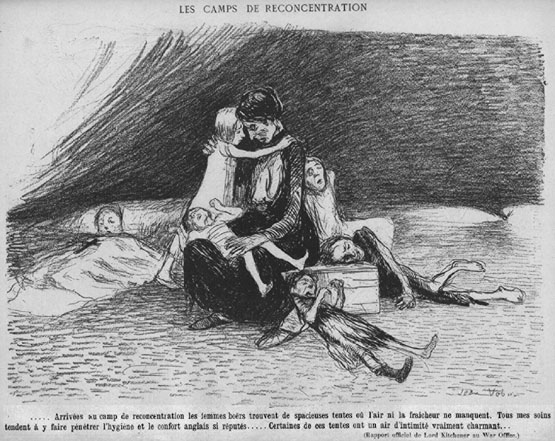
Eventually, there were a total of 45 tented camps built for Boer internees and 64 for black Africans. Of the 28,000 Boer men captured as prisoners of war, 25,630 were sent overseas. The vast majority of Boers remaining in the local camps were women and children. Over 26,000 women and children were to perish in these concentration camps.[46]
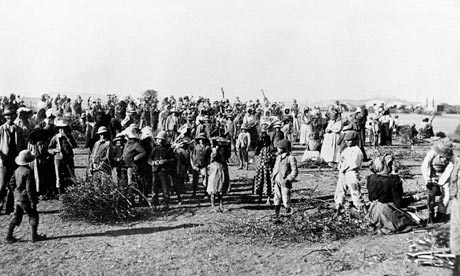
The camps were poorly administered from the outset and became increasingly overcrowded when Kitchener's troops implemented the internment strategy on a vast scale. Conditions were terrible for the health of the internees, mainly due to neglect, poor hygiene and bad sanitation. The supply of all items was unreliable, partly because of the constant disruption of communication lines by the Boers. The food rations were meager and there was a two-tier allocation policy, whereby families of men who were still fighting were routinely given smaller rations than others. The inadequate shelter, poor diet, inadequate hygiene and overcrowding led to malnutrition and endemic contagious diseases such as measles, typhoid and dysentery to which the children were particularly vulnerable.
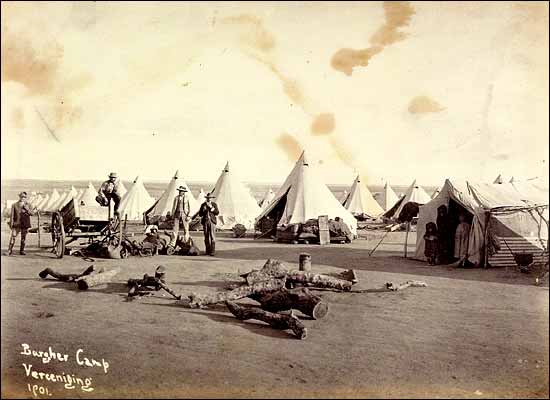

As the war raged across their farms and their homes were destroyed, many Africans became refugees and they, like the Boers, moved to the towns where the British army hastily created internment camps. Subsequently, the "Scorched Earth" policy was ruthlessly applied to both Boers and Africans. Although most black Africans were not considered by the British to be hostile, many tens of thousands were also forcibly removed from Boer areas and also placed in concentration camps.


Africans were held separately from Boer internees. Eventually there were a total of 64 tented camps for Africans. Conditions were as bad as in the camps for the Boers, but even though, after the Fawcett Commission report, conditions improved in the Boer camps, "improvements were much slower in coming to the black camps."


Public opinion and political opposition

Although the 1900 UK general election, also known as the "Khaki election," had resulted in a victory for the Conservative government on the back of recent British victories against the Boers, public support quickly waned as it became apparent that the war would not be easy and further unease developed following reports about the treatment by the British army of the Boer civilians. Public and political opposition to government policies in South Africa regarding Boer civilians was first expressed in Parliament in February, 1901 in the form of an attack on the policy, the government, and the army by the radical Liberal MP David Lloyd George.

Emily Hobhouse, a delegate of the South African Women and Children's Distress Fund, visited some of the camps in the Orange Free State from January, 1901, and in May, 1901 she returned to England on board the ship, the Saxon. Alfred Milner, High Commissioner in South Africa, also boarded the Saxon for holiday in England but, unfortunately for both the camp internees and the British government, he had no time for Miss Hobhouse, regarding her as a Boer sympathiser and "trouble maker."[48] On her return, Emily Hobhouse did much to publicise the distress of the camp inmates. She managed to speak to the Liberal Party leader, Henry Campbell-Bannerman who professed to be suitably outraged but was disinclined to press the matter, as his party was split between the imperialists and the pro-Boer factions.


The more radical Liberals however such as David Lloyd George and John Ellis were prepared to raise the matter in Parliament and to harass the government on the issue, which they duly did. St John Brodrick, the Conservative secretary of state for war, first defended the government's policy by arguing that the camps were purely "voluntary" and that the interned Boers were "contented and comfortable," but was somewhat undermined as he had no firm statistics to back up his argument, so when his "voluntary" argument proved untenable, he resorted to the "military necessity" argument and stated that everything possible was being done to ensure satisfactory conditions in the camps.

Hobhouse published a report in June, 1901 that contradicted Brodrick's claim, and Lloyd George then openly accused the government of "a policy of extermination" directed against the Boer population. In June, 1901, Liberal opposition party leader Campbell-Bannerman took up the assault and answered the rhetorical question "When is a war not a war?" with his own rhetorical answer "When it is carried on by methods of barbarism in South Africa," referring to those same camps and the policies that created them. The Hobhouse report caused uproar both domestically and in the international community. It should be noted however that there was very little public sympathy for the highly reactionary Boer president Kruger.

The end of the war

Towards the end of the war, British tactics of containment, denial, and harassment began to yield results against the guerrillas. The sourcing and coordination of intelligence became increasingly efficient with regular reporting from observers in the blockhouses, from units patrolling the fences and conducting "sweeper" operations, and from native Africans in rural areas who increasingly supplied intelligence, as the Scorched Earth policy took effect and they found themselves competing with the Boers for food supplies. Kitchener's forces at last began to seriously affect the Boers' fighting strength and freedom of manoeuvre, and made it harder for the Boers and their families to survive.

The last of the Boers surrendered in May, 1902 and the war ended with the Treaty of Vereeniging signed on 31 May 1902. Although the British had won, this came at a cost; the Boers were given £3,000,000 for reconstruction and were promised eventual limited self-government, which was granted in 1906 and 1907. The treaty ended the existence of the South African Republic and the Orange Free State as independent Boer republics and placed them within the British Empire. The Union of South Africa was established as a member of the Commonwealth in 1910.

In all, the war had cost around 75,000 lives; 22,000 British and allied soldiers (7,792 killed in battle, the rest through disease), between 6,000 and 7,000 Boer fighters, and, mainly in the concentration camps, between 20,000 to 28,000 Boer civilians (mainly women and children) and perhaps 20,000 black Africans (both on the battlefield and in the concentration camps).


Notes
- ^ Military History Journal, Vol 11 No 3/4 (October, 1999). Huw M Jones, "Neutrality compromised: Swaziland and the Anglo-Boer War, 1899 – 1902"
- ^ Two Rhodesian units, the Rhodesia Regiment and the Southern Rhodesia Volunteers, served in the war, contributing around 1,000 men. See Keppel-Jones, Arthur (1983). Rhodes and Rhodesia: The White Conquest of Zimbabwe, 1884–1902. Montreal, Quebec and Kingston, Ontario: McGill-Queen's University Press. pp. 590–599. ISBN 978-0-7735-0534-6.
- ^ a b c http://www.britannica.com/EBchecked/topic/555806/South-African-War
- ^ "Caring for the soldiers health". Nash's war manual. Eveleigh Nash. 1914. p. 309. Retrieved 22 August 2009.
- ^ "The Commissariat – The Red Cross – The Hague Court". Europe at war. Doubleday, Page & Company. 1914. pp. 183 (n198). Retrieved 22 August 2009.
- ^ Davenport & Saunders 2000, p. 228
- ^ Die ontplooiing van die Engelse Oorlog 1899–1900 at Google Books
- ^ Pakenham 1979, p. xxi
- ^ a b Morris, Michael & John Linnegar (2004). Every Step of the Way: The Journey to Freedom in South Africa. Ministry of Education. pp. 58–95. ISBN 0-7969-2061-3.
- ^ a b Pakenham 1979, pp. 1–5
- ^ Pakenham 1979, pp. 493–495
- ^ Wessels, p. 97
- ^ Pakenham 1979, p. xv
- ^ Cartwright 1964[page needed]
- ^ M. Nathan, Paul Kruger: His Life And Times, Knox, Durban, 1941.
- ^ cited in, T. Pakenham, The Boer War, Part 1, 'Milner's War'
- ^ R. Bester, Boer Rifles and Carbines of the Anglo-Boer War, War Museum of the Boer Republics, Bloemfontein, 1994 (See also Wessels 2000, p. 80).
- ^ a b Wessels 2000, p. 80
- ^ C.N. Connolly, 'Manufacturing Spontaneity'
- ^ Steele 2000, p. 7
- ^ Steele 2000, p. 6
- ^ Brian Inglis, Roger Casement (London: Coronet Books, 1974), pp.53–5. Quoted in Keith Jeffery, "The Irish Soldier in the Boer War," in The Boer War, ed. by John Gooch (London: Cass, 2000), p.145.
- ^ Keith Surridge, 'Lansdowne at the War Office', in The Boer War, ed. by John Gooch (London: Cass, 2000), p.24
- ^ Steele 2000, p. 4
- ^ Pakenham 1979, p. 56
- ^ Wessels 2000, p. 74
- ^ Fransjohan Pretorius, 'The Experience of the Bitter-Ender Boer,' in The Boer War',' ed. by John Gooch (London: Cass, 2000), p.179.
- ^ Pakenham 1979, p. 30
- ^ Wessels 2000, p. 81
- ^ Wessels 2000, pp. 82–85
- ^ Field Marshal Lord Carver, The Boer War, pp. 259–262
- ^ 'Historical Overview' in Antony O'Brien, Bye-Bye Dolly Gray
- ^ From the "Battle of Magersfontein," verse by Private Smith of the Black Watch December 1899. (Quoted in Pakenham 1979, p. 115)
- ^ Steele 2000, p. 12
- ^ A. B. "Banjo" Patterson,From the Front (see Australian references).
- ^ Wilcox, Australia's Boer War, pp. 84–85.
- ^ N. G. Speed, Born to Fight
- ^ a b Anglo-Boer War Philatelic Society: Collecting Interests
- ^ Ango-Boer War Museum
- ^ Ango-Boer War Museum
- ^ a b c Jones 1996
- ^ Thomas Pakenham, page 571 The Boer War, ISBN 0-7474-0976-5
- ^ Parkenham, p. 402
- ^ Professor J.C. de Villiers, MD FRCS (June 1984). "The Medical Aspect of the Anglo-Boer War, 1899–1902 Part ll". Military History Journal 6 (3).
- ^ Pakenham 1979[page needed]
- ^ A Century of Postgraduate Anglo Boer War Studies at Google Books
- ^ The Boer War / Denis Judd & Keith Surridge (2003) ISBN 1-4039-6150-6
- ^ Pakenham 1979, pp. 531–32, 536+
The Boer War (1900-1902) Timeline
1899
31 May – 5 June: Bloemfontein Conference between British high commissioner Milner and Transvaal President Kruger fails to reach agreement.
28 July: British colonial secretary Chamberlain informs Parliament that Britain intends to enforce supremacy in southern Africa.
28 August: British government informs Transvaal government of its refusal to abandon claims to sovereignty over all of southern Africa.
8 September: British cabinet decides to send another 10 000 troops to Natal.
26 September: British send troops to Dundee under General Penn Symons.
27 September: Kruger orders mobilisation of Transvaal commandos.
29 September: British cabinet approves preparations for army mobilisation.
30 September: Irish Transvaal Committee established in Dublin to mobilise Irish support for Boer republics.
2 October: President Steyn orders mobilisation of Free State commandos in support of the Transvaal.
7 October: British mobilise 1st Army Corps; General White lands at Durban with reinforcements.
9 October: Kruger sends ultimatum to British government to withdraw reinforcements within 2 days or face war.
10 October: British leadership exultant over Transvaal ultimatum; Cecil Rhodes arrives in Kimberley in attempt to take over town’s defence from British army.
11 October: Ultimatum expires – war officially begins.
12 October: Boer commandos invade Natal and Cape Colony.
14-16 October: Boer forces commence sieges of Mafeking and Kimberley.
20 October: Battle of Talana Hill – Commandant Moller surrenders to Penn Symons.
First troopships sail from Southampton for Cape Town.
21 October: Battle of Elandslaagte – Boers attacked by General French’s lancers.
23 October: Battle of Dundee – Boers defeat British brigade, Penn Symons killed.
24 October: Battle of Rietfontein.
26 October: Transvaal and Free State commandos link up near Ladysmith.
30 October: Battle of Modderspruit – General Joubert defeats White; Carleton surrenders at Nicholson’s Nek.
31 October: General Buller lands at Cape Town with leading units of 1st Army Corps.
1 November: Free State commandos cross the Orange River to raid Cape Colony.
2 November: Boer forces lay siege to Ladysmith – 12 000 British troops under White trapped.
14 November: Boer force crosses the Tugela River, heading towards Pietermaritzburg.
15 November: General Botha’s commando wrecks armoured train between Frere and Chieveley, captures 60 prisoners including journalist Winston Churchill.
20 November: General Methuen’s force of 8 000 troops cross the Orange to relieve Kimberley.
22/3 November: Battle of Willow Grange.
23 November: Battle of Belmont – Methuen advances. Boer raids southward into Natal end.
25 November: Battle of Graspan – Methuen advances further.
26 November: British-African force force attacks Boer laager at Derdepoort.
28 November: Battle of Modder River – Methuen’s attack on Boer positions halted.
10 December: Battle of Stormberg – Boers defeat General Gatacre’s assault, 600 British captured. Beginning of ‘Black Week’ for British.
11 December: Battle of Magersfontein – General De la Rey’s Boer force defeats Methuen’s Scottish regiments, nearly 1 000 casualties, General Wauchope killed.
13 December: Buller launches 2 days of artillery bombardment across the Tugela.
15 December: Battle of Colenso – Buller’s attempt to cross the Tugela repulsed by Botha’s Boer force, with over 1 000 casualties and 10 field guns abandoned.
17 December: ‘Black Week’ ends – total British losses 700 killed, 3 000 wounded, 2 000 taken prisoner; Boer losses minimal.
18 December: British cabinet appoints Field Marshal Roberts as C-in-C South Africa with General Kitchener as Chief of Staff, and calls out army reserve.
23 December: Roberts and Kitchener sail from England.
26 December: Boers repulse Baden-Powell’s attack on Game Tree Fort.
29 December: Royal Navy seizes German mail-steamer Bundesrath.
1900
6 January: Boers attack British positions at Ladysmith.
10 January: Roberts and Kitchener land at Cape Town.
20 January: Buller crosses the Tugela with 26 500 men.
25 January: Battle of Spioenkop – Warren’s attack repulsed by Boer force, 1 200 British losses: worst defeat since Crimean War.
5 February: Battle of Vaalkrans – Buller agains fails to break through Boer lines.
7 February: Vaalkrans evacuated by Boers.
11 February: Roberts’ force commences march to the north to relieve Kimberley.
15 February: Kimberley relieved by Gen French’s cavalry.
18 February: Battle of Paardeberg begins – Kitchener orders attack on Boer lines.
19 February: British commence siege of Boers at Paardeberg.
27 February: Gen Cronje surrenders at Paardeberg with 4 000 men.
28 February: Ladysmith relieved by Buller.
7 March: Battle of Poplar Grove – Kruger narrowly escapes capture.
10 March: Battle of Driefontein.
13 March: Bloemfontein captured by Roberts’ force.
15 March: Roberts proclaims amnesty except for Boer leaders.
17 March: Boer war council at Kroonstad.
27 March: Death of Commandant General Joubert.
31 March: Battle of Sannaspos – Gen de Wet ambushes Gen Broadwood, captures 400 British troops and 80 supply wagons.
1 April: Almost 1 000 British troops already died of typhus in Bloemfontein.
4 April: De Wet attacks British garrison at Reddersburg, captures 600 troops.
3 May: Roberts resumes march northwards from Bloemfontein.
11 May: Buller resumes march northwards into Transvaal.
12 May: Roberts’ force occupies Kroonstad.
14 May: Buller outmanoeuvres Boers from Biggarsberg.
17 May: Mafeking relieved by Colonels Mahon and Plumer.
19 May: Kruger leaves Pretoria.
27 May: Roberts’ force crosses the Vaal River at Vereeniging.
28 May: British proclaim annexation of Orange Free State.
31 May: Johannesburg captured by Roberts’ force. Battle of Lindley – Spragge and Irish Yeomanry captured by Piet de Wet.
5 June: Pretoria captured by Roberts.
7 June: Battle of Roodewal.
11/12 June: Battle of Diamond Hill – Botha driven off by Buller.
12 June: Volksrust occupied by Buller’s force.
4 July: Roberts and Buller link up.
11 July: Battle of Silkaatsnek – Scots Greys surrender to Boers.
15 July: Steyn and De Wet escape from Brandwater Basin.
21 July: Roberts commence march eastwards to Komati Poort.
25 July: Lloyd George warns in Parliament that South African war is becoming war of extermination against Boer people.
31 July: Commandant Prinsloo surrenders with 4 000 men to General Hunter in Brandwater Basin.
14 August: De Wet again escapes capture.
27 August: Battle of Dalmanutha – Buller defeats Botha.
30 August: Last British prisoners released at Nooitgedacht.
2 September: Roberts offers large payments to Botha and De la Rey if they surrendered.
6 September: Lydenburg captured by Buller’s force.
11 September: Kruger leaves the Transvaal for Europe.
25 September: British reach Mozambique border at Komati Poort.
8 October: Milner appointed administrator of newly annexed territories.
19 October: Kruger sails for France from Lourenco Marques on board the Gelderland.
24 October: Buller returns to England.
25 October: British proclaim annexation of the Transvaal.
6 November: Battle of Bothaville – De Wet defeated, Le Gallais killed.
16 November: De Wet attempts to invade the Cape Colony.
23 November: De Wet captures Dewetsdorp.
29 November: Kitchener succeeds Roberts as C-in-C South Africa.
13 December: Surprise attack by Generals De la Rey and Smuts on Clements at Nooitgedacht.
5 December: De Wet driven back into the Free State.
11 December: Roberts returns to England.
14 December: De Wet and Steyn again escapes capture.
16 December: Boer commandos under Kritzinger and Hertzog invade the Cape Colony.
20 December: British proclaim martial law in the Northern Cape.
21 December: Kitchener orders removal of Boer and black civilians from countryside to concentration camps – beginning of British war against South African civilians.
29 December: Helvetia post captured.
1901
1 January: Colonial Defence Force called out in the Cape Colony.
4-31 January: Attacks by De la Rey, Beyers, De Wet and Smuts on British positions throughout Transvaal and Free State.
27 January: French launches drive in Eastern Transvaal.
31 January: Smuts captures Modderfontein.
7 February: British send additional 30 000 mounted troops to South Africa.
10 February: De Wet leads raid into Cape Colony.
13 February: Kitchener proposes peace meeting to Botha.
19 February: De Wet driven back into the Free State.
28 February: Middelburg peace talks between Botha and Kitchener begins.
16 March: Botha refuses Kitchener’s peace terms.
10 April: First British drive in Northern Free State begins under General Elliot.
18 July: British commence first drive in Cape Colony northwards.
7 August: Kitchener proclaims banishment for Boer leaders captured armed after 15 September.
12 August: Kritzinger’s force driven out of Cape Colony.
3 September: Smuts leads Boer invasion of Cape Colony at Klaarwater.
5 September: Lotter’s commando captured by Scobell.
7 September: Battle of Elands River Poort – Smuts defeats 17th Lancers; Botha attempts invasion of Natal.
17 September: Battle of Blood River Poort – Botha defeats Gough’s force.
26 September: Botha’s force attacks Forts Itala and Prospect.
6 October: Botha escapes northwards.
9 October: Martial law extended in the Cape Colony.
11 October: British execute Commandant Lotter, capture Commandant Scheepers.
30 October: Battle of Bakenlaagte – Benson killed.
7 November: Hamilton appointed Kitchener’s Chief of Staff.
29 November: De Wet attacks convoy near Speyfontein.
7 December: Pro-British National Scouts inaugurated.
16 December: Kritzinger captured.
17 December: Johannesburg Stock Exchange reopened.
23 December: Blockhouse line between Kroonstad and Lindley completed.
25 December: Battle of Tweefontein – De Wet captures Yeomanry.
1902
4 January: Defeat of British near Ermelo.
10 January: German Chancellor makes anti-British speech in Reichstag.
17 January: Scheepers executed by British at Graaff-Reinet.
29 January: British government refuses Dutch government’s offer to mediate.
5 February: Boers capture British convoy near Beaufort West.
6 February: British launch new drive in Eastern Free State.
7 February: De Wet breaks through blockhouse line.
13 February: Renewed British drive in Eastern Free State.
7 March: Battle of Tweebosch – De la Rey captures wounded Methuen.
20 March: Botha agrees to British request for peace talks.
24 March: British commence first drive in Western Transvaal.
26 Rhodes: Death of Cecil Rhodes in Cape Town.
4 April: Smuts begins siege of Okiep.
9 April: Boer peace delegates meet at Klerksdorp.
11 April: Battle of Rooiwal – nearly 50 Boers killed in failed attack under General Kemp.
12-18 April: First meeting of Boer peace delegates with Kitchener at Pretoria.
1-10 May: Last British drives in North-eastern Free state.
3 May: Siege of Okiep ends.
6 May: Zulus attack sleeping Boers at Holkrans, kill 59.
11 May: Hamilton’s last drive in Western Transvaal ends.
15 May: First meeting of 60 Boer delegates at Vereeniging.
18 May: Boer delegates meet Kitchener and Milner at Pretoria.
31 May: Terms of surrender signed at Pretoria; war formally over.


Warfare is a fascinating subject. Despite the dubious morality of using violence to achieve personal or political aims. It remains that conflict has been used to do just that throughout recorded history.
ReplyDeleteYour article is very well done, a good read.
SIS ENGLAND
ReplyDeleteSo often the adage "the Victor Rewrites History" smothers the reality of the cost of achieving victory and no less so for the South African Trek Boer seeking to escape repression only to be overwhelmed by forces driven by greed and expansionism. Where the British failed in America the Colonialists thrived without the Empire but sadly the descendants of the the Empire both at home and abroad still struggle to find their elusive freedom - a great effort at exposing the painful truth and may it survive as a reminder of the human cost of intransigent politicians
ReplyDelete